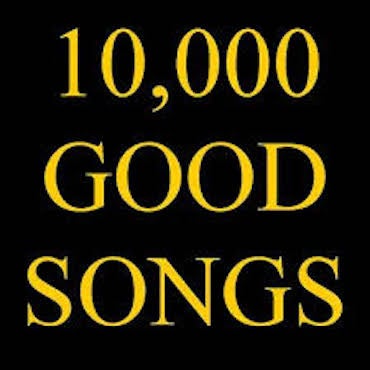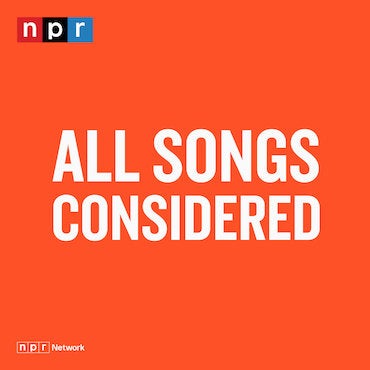Housing jargon, explained

New construction next to an older rowhome on a Philadelphia block. (Photo by Jessica Kourkounis for Keystone Crossroads)
In reporting Locked out: Pa. has a housing problem, we came across some pretty wonkish terms. Here’s a shortcut to understanding those terms.
In reporting Locked out: Pennsylvania has a housing problem, we came across some pretty wonkish terms. Here’s a shortcut to understanding those terms and important facts.
Explainers:
Gentrification
Zoning laws and segregation
Court decision on housing discrimination
Using tax credits to build affordable housing
Terms:
30 percent of income as a benchmark for housing expenses
The United States National Housing Act of 1937 established the national public housing program. It worked like this: federal money went towards construction of public housing, which was managed by a local housing authority using rent paid by tenants. But as buildings aged and maintenance costs grew, rent went up to cover expenses, and the low-income people public housing was supposed to help could not afford to live there.
In 1969, Senator Edward Brooke from Massachusetts pushed through an amendment to the 1968 Housing and Urban Development Act establishing a limit on what families in public housing programs are required to pay. The Brooke Amendment, as it came to be known, established the maximum a public housing tenant could pay at 25 percent of his income, which was increased to 30 percent in 1981.
In Pennsylvania, 30 percent of households spend more than 30 percent of their income on housing, which the Department of Housing and Urban Development considers “cost burdened.”
It’s unclear where Brooke’s original 25 percent benchmark originated (for some theories, see page 30 of a HUD report on the adequacy of the 30 percent rule). But since it was considered a basic rule for what a family could pay for housing and still have enough for other necessities, the private market took it up, too. For many years, Fannie Mae and Freddie Mac, the federal mortgage backers, also used figures around 30 percent to calculate loans.
The figure is ultimately an arbitrary one. For a very low-income family, even 30 percent can be a burden as the cost of other necessities rises. At the same time, a high-earning family could afford to spend more on housing. Other factors also skew the calculation; for example, transportation can factor significantly for a driving family living in the suburbs and a lot less so for a family in a walkable city with public transportation.
Blockbusting
The practice where real estate agents would convince homeowners in all-white neighborhoods to sell their homes for low prices by telling them minority families were preparing to move in. Those houses would then be sold to minority families at much higher prices. As it became illegal to have racially restrictive covenants, some white residents in cities became increasingly nervous about the arrival of African-American families and what effect they would have on property values. Some real estate agents capitalized on this fear by buying up houses at low cost and selling them to African-Americans moving north or eager to escape housing projects and segregated neighborhoods. Since African-Americans often didn’t qualify for mortgages, the houses were sold to them “on contract,” meaning their monthly payments went to the real estate agent, and the family earned no equity from home ownership.
Community Land Trust
A nonprofit organization that owns and manages land for a purpose defined by its community, often to maintain affordable housing. Usually CLTs separate the land from the houses that stand on it, retaining ownership of the land while selling the houses to low- and moderate-income families and individuals. This lets the CLT impose rules on the homeowner — like who they can sell the home to and how much appreciation they can add to the home’s sale price — allowing them to keep the properties affordable and within low- to moderate-income homeowners’ reach.
Covenant
A covenant is a legally enforceable contract, usually in the deed to a house, that ‘runs with the land,’ meaning it supersedes any change in ownership. In the U.S. many neighborhoods had racially restrictive covenants that didn’t allow homes to be sold to African-Americans. In 1926, the Supreme Court ruled that restrictive covenants were legal; in 1948, they ruled that the covenants were not enforceable by law, but could remain in effect. The Fair Housing Act of 1968 made racially restrictive covenants illegal, but they remain in the deeds to many homes nationwide.
Fair Housing Act of 1968
As part of the Civil Rights Act of 1968, the Fair Housing Act prohibits discrimination in the sale, rental and funding of housing based on race, color, religion, sex or national origin. It was extended in 1988 to include disability and familial status.
Federal Housing Administration
The FHA is the world’s largest insurer of mortgages, backing 34 million home mortgages since its creation in 1934. It’s the only government agency that is entirely self-funded, and it has helped increase the rate of home ownership in the U.S. Though the FHA has helped low-income populations access permanent housing, the administration also initially contributed to redlining and discrimination.
Federal Public Housing Program
Established by the Housing Act of 1937, the program supplies rental housing to qualifying low-income families and individuals, the elderly and people with disabilities at low rents. Unlike the Housing Choice Voucher program, where people can choose their own living situation and receive rental assistance for privately owned units, the public housing program is made up of specific units that are managed by local housing authorities.
GI Bill
A 1944 law that offered veterans of World War II low-cost mortgages, low-interest business loans and tuition reimbursement for college or trade school. Similar opportunities have been extended to veterans of more recent wars as well. Overall, the effect was positive, but later analysis found that the GI bill was often a tool of segregation and racial inequality. For example, of the 67,000 mortgages insured by the GI bill after WWII, only 100 were for non-white veterans.
Hill v. Gautreaux (1976)
A Supreme Court ruling that gave residents of a Chicago housing project Section 8 vouchers they could use to pay rent anywhere that would accept them. Researchers at Northwestern took the opportunity to study the outcomes of two different populations, those that stayed in high-poverty neighborhoods and those that moved to low-poverty neighborhoods. Initial research found that the families that moved to higher-income areas were more successful in the long run. The implications of this research are still being debated today.
Home Owners Loan Corporation
With the Great Depression threatening to send thousands into foreclosure, the New Deal established this agency to refinance mortgages and keep people in their homes. Banks were happy to trade shaky mortgages for government-backed bonds and homeowners found the HOLC to be a patient and forgiving lender. From 1933-1935, the HOLC refinanced and extended about a million mortgages. The HOLC is also remembered for its role in the creation of mortgage redlining (see below) in this country.
HUD (U.S. Department of Housing and Urban Development)
HUD was founded in 1965 as a cabinet in the president’s administration. Its most recent (2015) allocated budget was $48.3 billion, to assist with low-income housing, fair housing and community development programs. HUD’s mission is “to create strong, sustainable, inclusive communities and quality affordable homes for all.”
Moving to Work
A deregulating pilot program launched by the U.S. Department of Housing and Urban Development (HUD) in 1996 to give a participating local housing authority more flexibility in how it uses federal dollars. MTW’s three main objectives are 1) to get housing authorities to use federal money more effectively, 2) to incentivize and help people achieve economic self-sufficiency, and 3) to increase housing choices for low-income families and individuals. Currently, 39 housing authorities, including Philadelphia’s and Pittsburgh’s, participate in the program. Congress is considering expanding the program.
Point-in-time count
HUD requires a count of every sheltered and unsheltered homeless person on one night in January each year. Local organizations, with the help of volunteers, count everyone in shelters, transitional housing and on the streets. The point-in-time count helps HUD and local agencies allocate funds for the year.
Redlining
The practice of denying housing, financing, services and amenities to specific neighborhoods for discriminatory reasons. When the Home Owners Loan Corporation was created in 1933 to save homeowners from foreclosure, it included “residential security maps” that rated neighborhoods based on everything from housing stock to “threat of infiltration of foreign-born, negro or lower-grade population.” Highly-rated neighborhoods were eligible for mortgage refinancing and suffered much lower rates of foreclosure and eviction. Lower-rated neighborhoods experienced urban decay. There is debate over whether the maps created redlining or just reflected a process that was already underway, but regardless, redlining created the segregated communities we have today. The Fair Housing Act of 1968 made redlining illegal, but many argue that it continues to this day in other forms, like black communities attracting fewer business loans. Reverse redlining, when low-income groups are taken advantage of with higher mortgage or loan rates, is also still prevalent. There are old HOLC maps of Philadelphia available.
Section 8
In the decades after the Housing Act of 1937 established the national public housing program, the resulting public housing projects increasingly became centers of concentrated poverty, with poorly maintained units. Seeking an alternative, in 1974 Congress passed an amendment to the Act — now commonly known as Section 8 — starting a program that subsidizes rent in the private market. Participants have to find their own rental, which gives them more flexibility to choose a neighborhood and unit type. The tenant pays 30 percent of his or her income to a private landlord, and federal government funds make up the remaining rent, up to a certain amount based on HUD’s determination of fair market rents in the area. There are nearly 90,000 participants in the program now.
Shelley vs. Kraemer (1948)
A Supreme Court ruling established that neighborhoods/properties could have racially restrictive covenants, but those agreements were not enforceable in a court setting. In St. Louis, Mo., the black Shelley family bought a house in a neighborhood where residents had agreed to not sell any homes to black or Asian families. Louis Kraemer, one of the white neighbors, sued to have the Shelley family removed. The Supreme Court ruled that the neighborhood agreement wasn’t illegal, but asking a court to enforce it would be. The Supreme Court decided that court rulings would be considered state action, and the state cannot discriminate under the 14th amendment. But personal agreements are not state action, and thus, legal.
Steering
When landlords or realtors subtly try to guide potential residents towards or away from housing based on the tenant’s race, gender, disability or other discriminatory factors. Examples of steering would be landlords exaggerating flaws or downplaying amenities in a building, or a real estate agent only showing houses in certain neighborhoods. Steering perpetuates segregation.
Subprime loans
A mortgage or business loan given to someone who doesn’t qualify for a traditional loan, often at a higher interest rate. Subprime lenders claim to help those with low credit scores get a mortgage, which can help them repair their credit score. Critics say this is predatory lending and that recipients will never be able to pay off the loans. The over-issuing of subprime loans led to the 2008 housing market crash and recession.
Texas Department of Housing and Community Affairs et al v. Inclusive Communities Project, Inc., et al (2015)
This is the Supreme Court case from June 2015 that ruled that the 1968 Fair Housing Act prevents intentional as well as unintentional discrimination in the housing market. In other words, if policies, like zoning laws, are not written with the objective of harming minorities but ultimately have the effect of harming minorities, the law can still disallow those seemingly neutral policies. The “disparate impact” doctrine — which looks at effect rather than intent — has been used by civil rights groups to fight for more inclusionary housing policies, and the Court’s decision upheld their ability to do so. For more detail, see our explainer.
Are you curious about a word or idea you’re not seeing here? Let us know in the comment section below.
WHYY is your source for fact-based, in-depth journalism and information. As a nonprofit organization, we rely on financial support from readers like you. Please give today.




